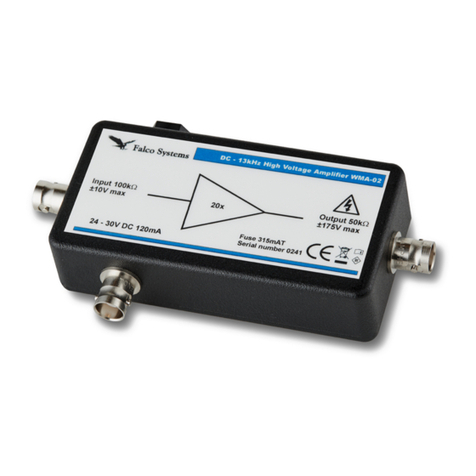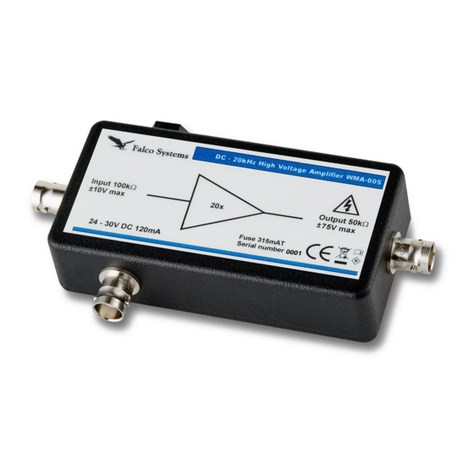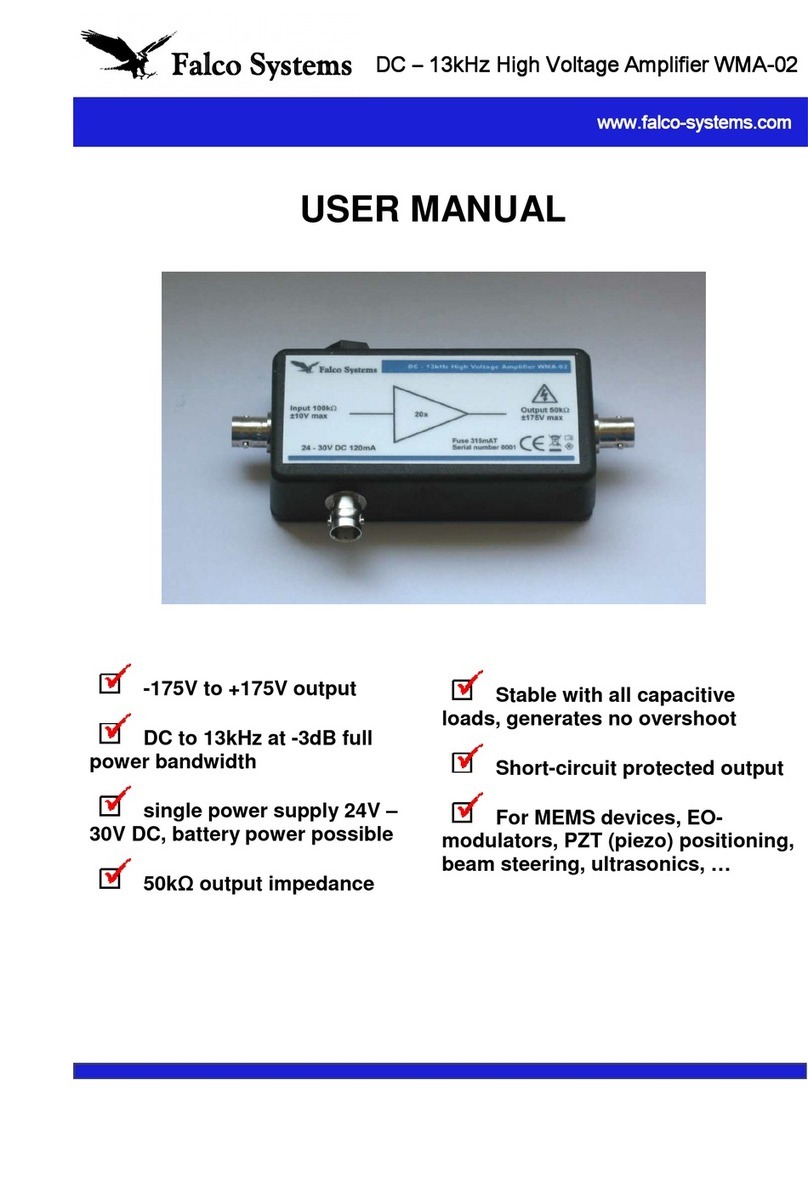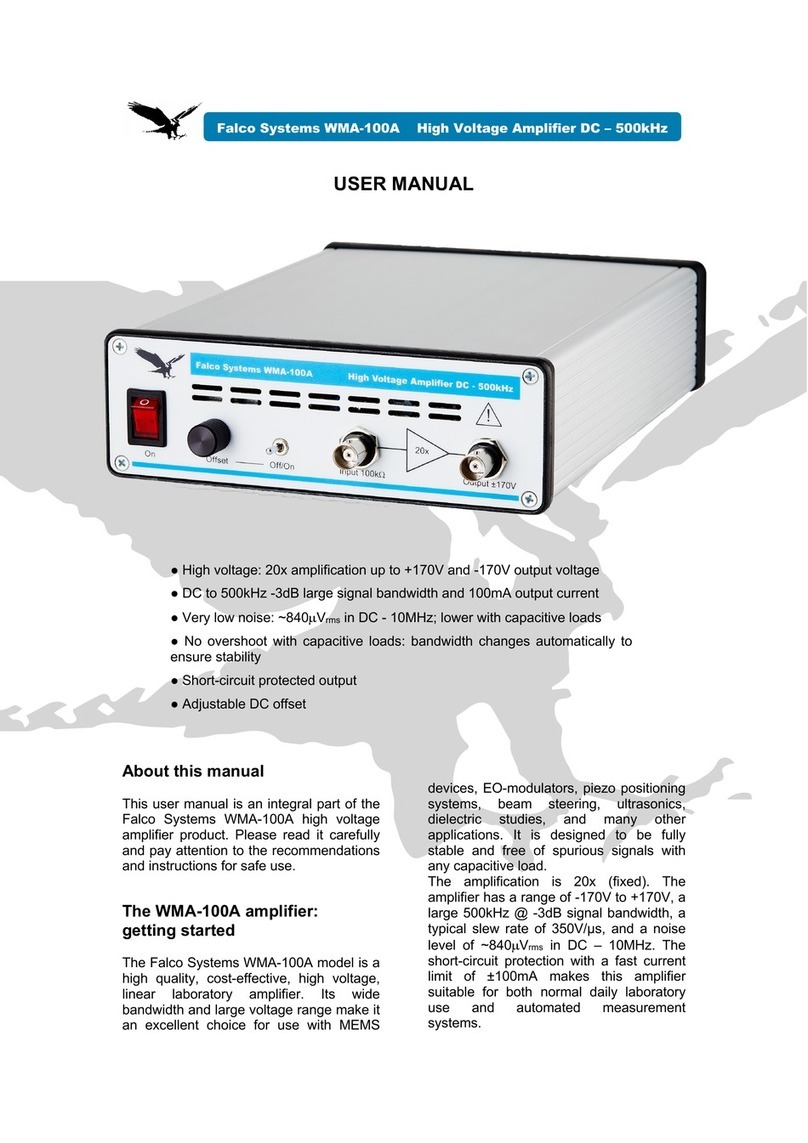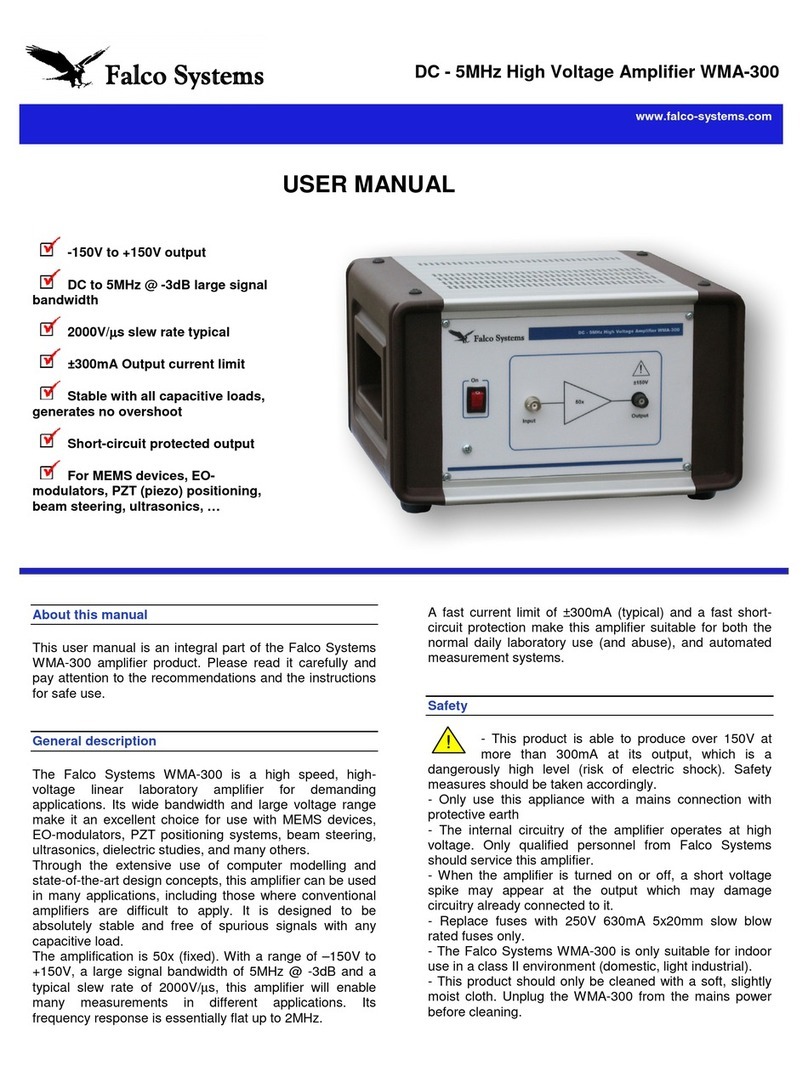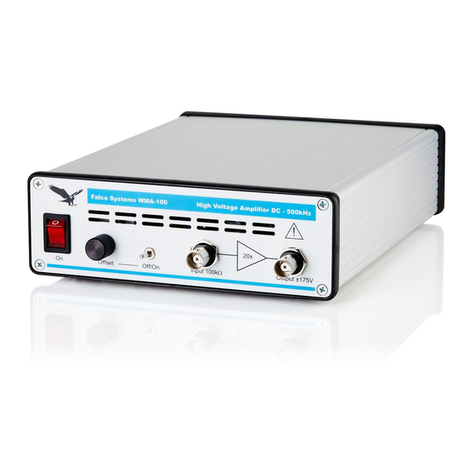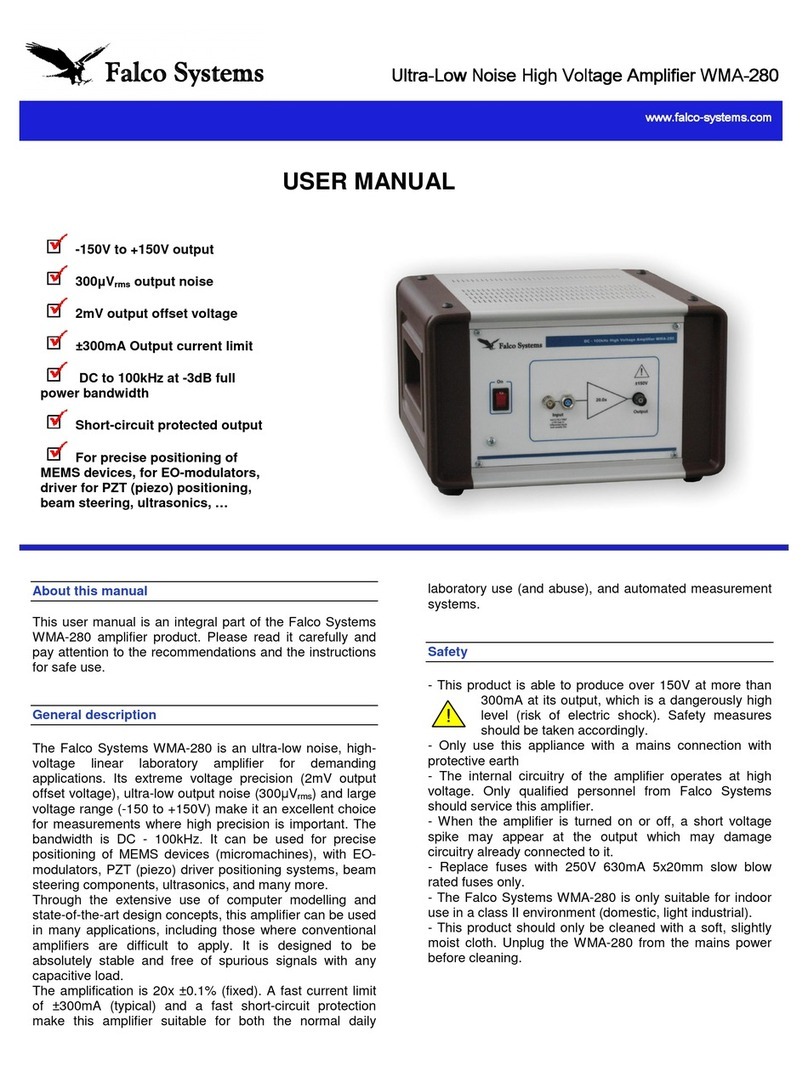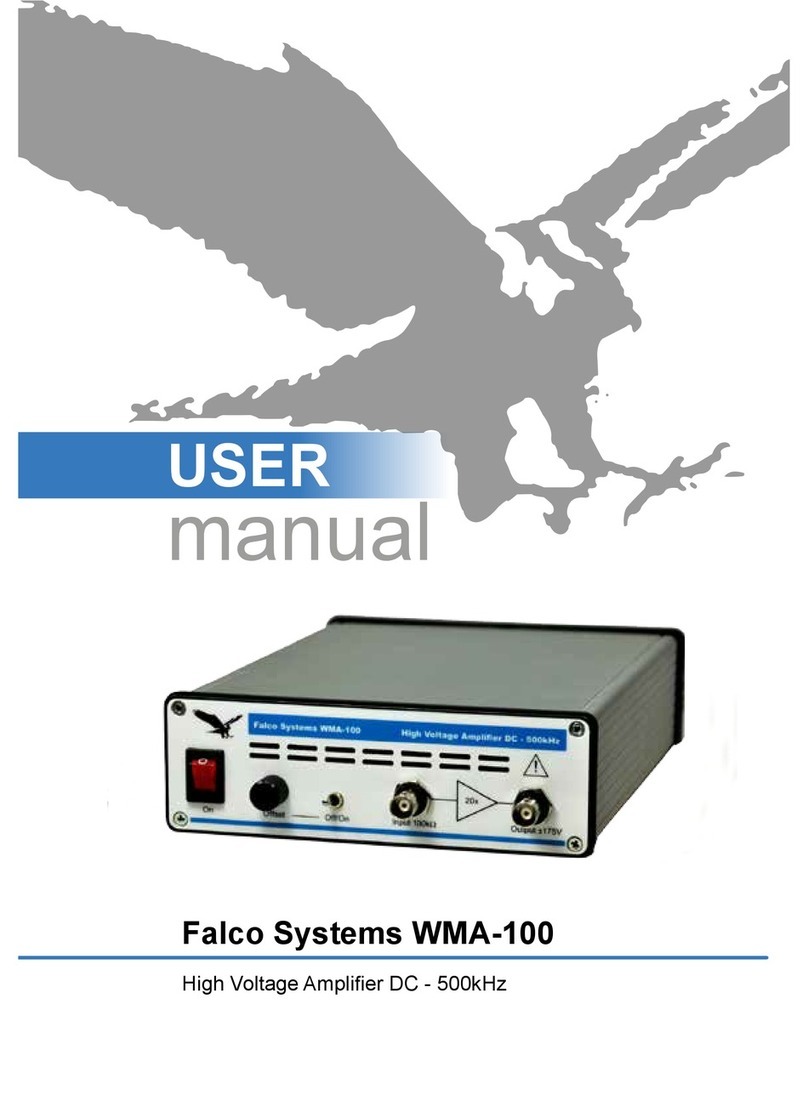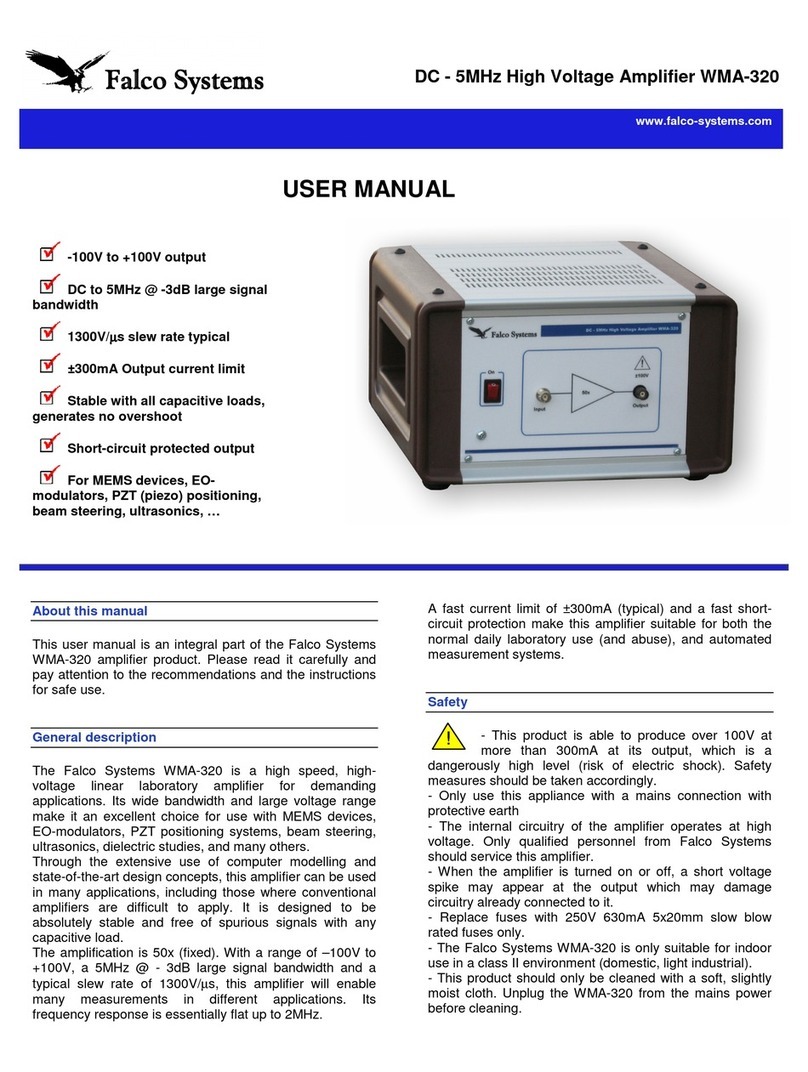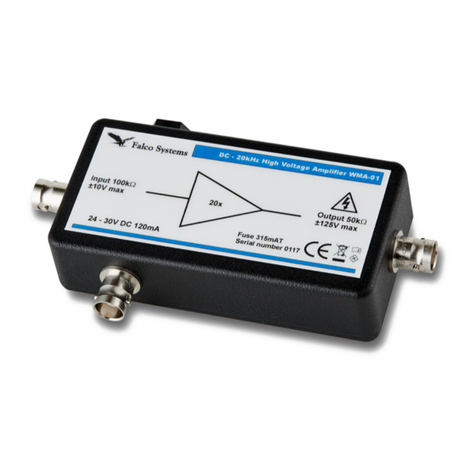
with the amplifier. It cuts the bandwidth to
DC – 500Hz, at the same time reducing
the output noise level to an unprecedented
~20µVrms. Accessories such as
interference-rejecting differential cables
and connector for the amplifier are also
available at Falco Systems. Keep input
and output cables as short as possible to
prevent picking up interference from the
surroundings. For more information on
how to connect the amplifier for the lowest
possible noise level, please read the
‘Noise’ section later in this manual.
The WMA-200 high voltage amplifier is
designed to be fully stable and free of
spurious signals with any capacitive load.
The amplification is a precise 20.0x (fixed,
defined by 0.1% precision resistors). The
amplifier has an output range of –175V to
+175V, a large signal bandwidth of
100kHz @ -3dB, and a slew rate of
80V/μs. The short-circuit protection with a
fast current limit of ±150mA make this
amplifier suitable for both normal daily
laboratory use and for implementing
automated measurement systems.
Recommendations:
- Never apply more than +15V (or less
than -15V) to the amplifier input to prevent
damage.
- Do not connect separate signal sources
to both the BNC and differential inputs
simultaneously, as the signal sources are
be connected together inside the amplifier.
- A short voltage spike may appear at the
output, when the amplifier is turned on or
off. Pay attention not to damage sensitive
circuitry or equipment already connected.
- The amplifier cannot be damaged by a
short-circuit condition or capacitive
loading, but two situations should be
avoided:
● Connecting a charged capacitor to
the input or output.
● Connecting a highly inductive load to
the output (such as a coil).
- Do not connect anything to the output
that can act as an antenna.
- This product should only be cleaned with
a soft, slightly moist cloth. Unplug the
WMA-200 amplifier from the mains power
before cleaning.
Safety
- This product is able to produce over
175V at more than 150mA at its output,
which is a very high level (risk of electric
shock). Safety measures should be taken
accordingly. This is indicated by the sign
above the output connector of the
amplifier.
- This product is a Class I appliance which
requires a mains connection with
protective earth.
- Always position the WMA-200 amplifier
such that the on/off power switch is easily
accessible.
- The airflow to and from the WMA-200
amplifier should not be blocked or
impeded, at the front, sides and the back.
- The internal circuitry of the amplifier
operates at high voltage. Only qualified
personnel from Falco Systems should
service this amplifier.
- Only replace fuses with the correct type:
● 230V version of the WMA-200: 250V
800mA 5x20mm slow blow.
● 115V version of the WMA-200: 250V
1.6A 5x20mm slow blow.
- The Falco Systems WMA-200 amplifier is
only suitable for indoor use in a class II
environment (domestic, light industrial).
- Only use the WMA-200 on the right
mains voltage. The 115V version is only
suitable for 110-115V AC mains voltage,
and the 230V version for 230V AC.
- Non-sinusoidal mains power generators
cannot be used to power this product.
Detailed properties of the WMA-
200 high voltage amplifier
Inputs
Two inputs are available on the WMA-200
front panel: a standard BNC input for easy
interfacing to existing setups, and a
differential connector to reject interference.
Such interference is almost always
present on the incoming cable, picked up
from the environment external to the
amplifier. A mating cable connector for the
differential input (the TRIAD 01 male
connector) can be ordered from Falco
Systems for use with the amplifier.
The input impedance of both inputs of the
WMA-200 high voltage amplifier is defined
by a 1kΩ resistor to ground, in parallel with
100pF to prevent electrostatic discharge
(ESD) input damage. These resistors add
some noise to the output voltage unless a
low-impedance source (e.g. the output of a
preamplifier) is connected to the input. The
noise will be slightly higher when the
amplifier input is left open.
